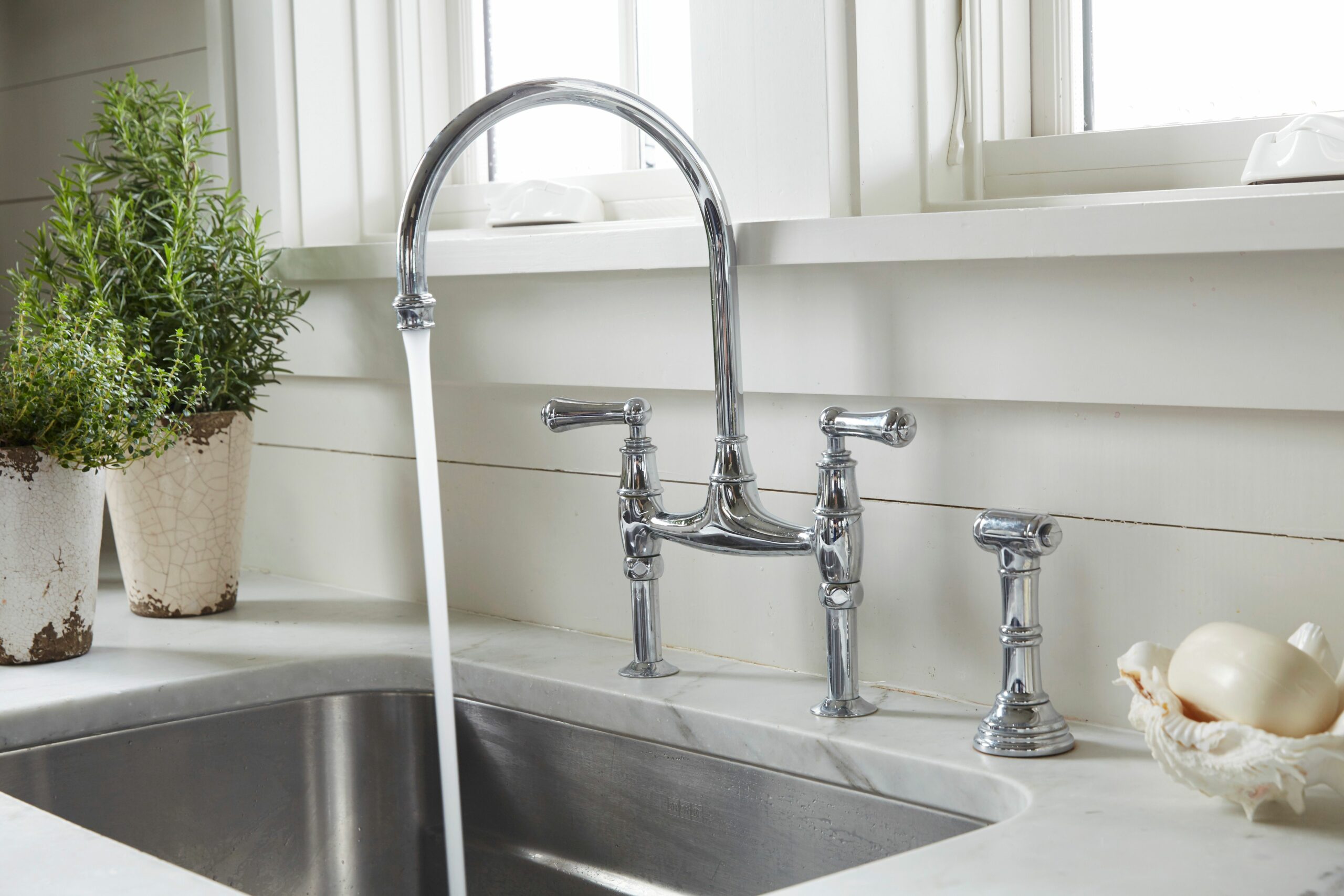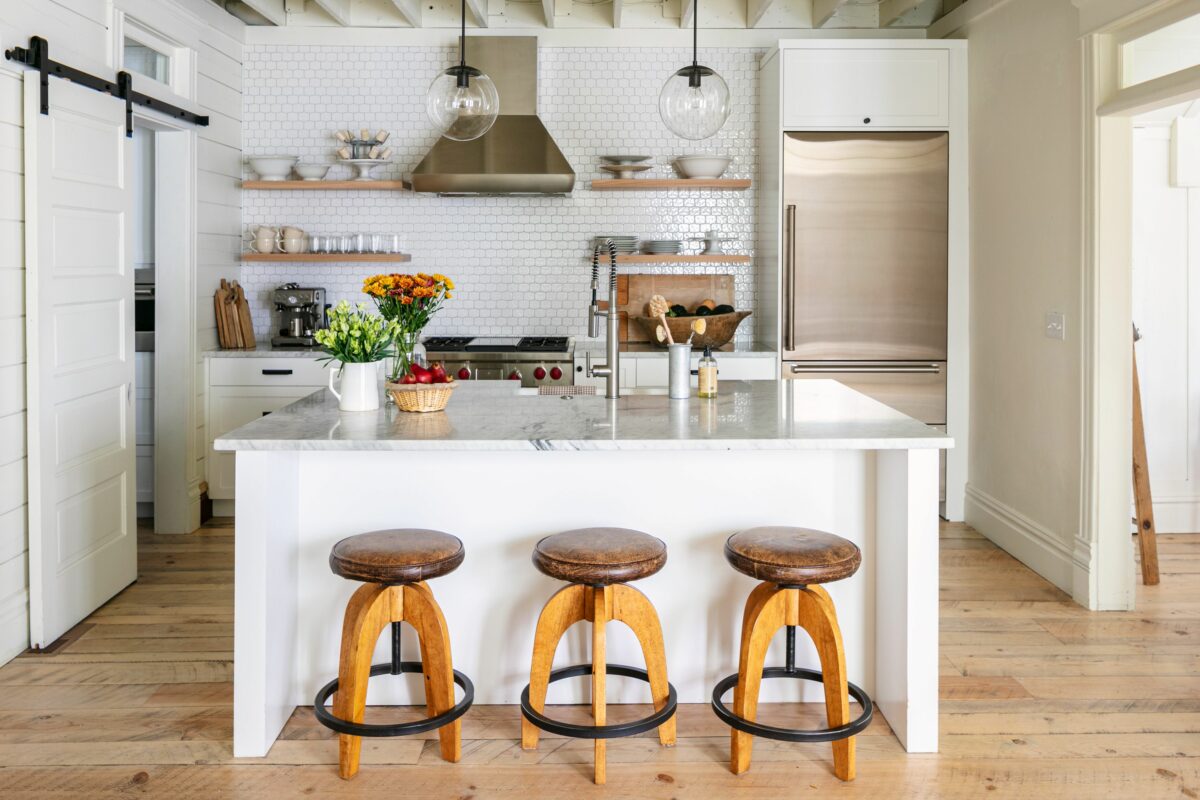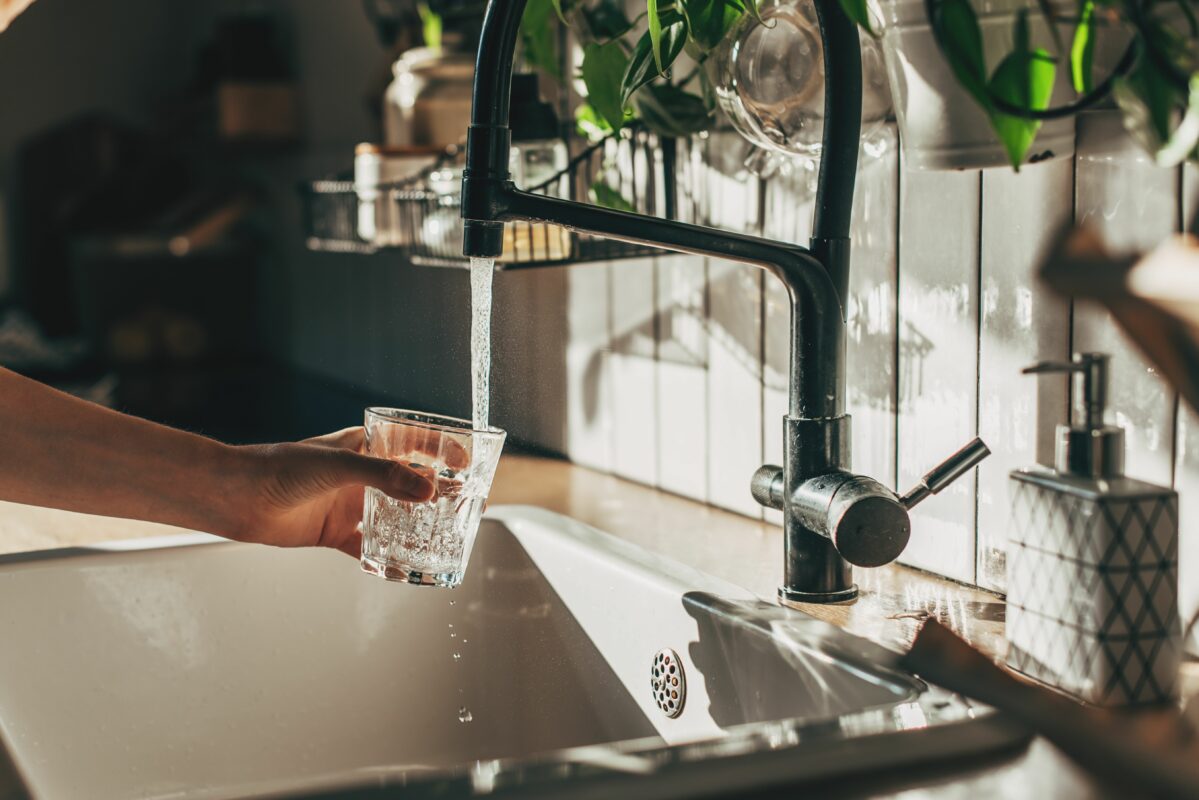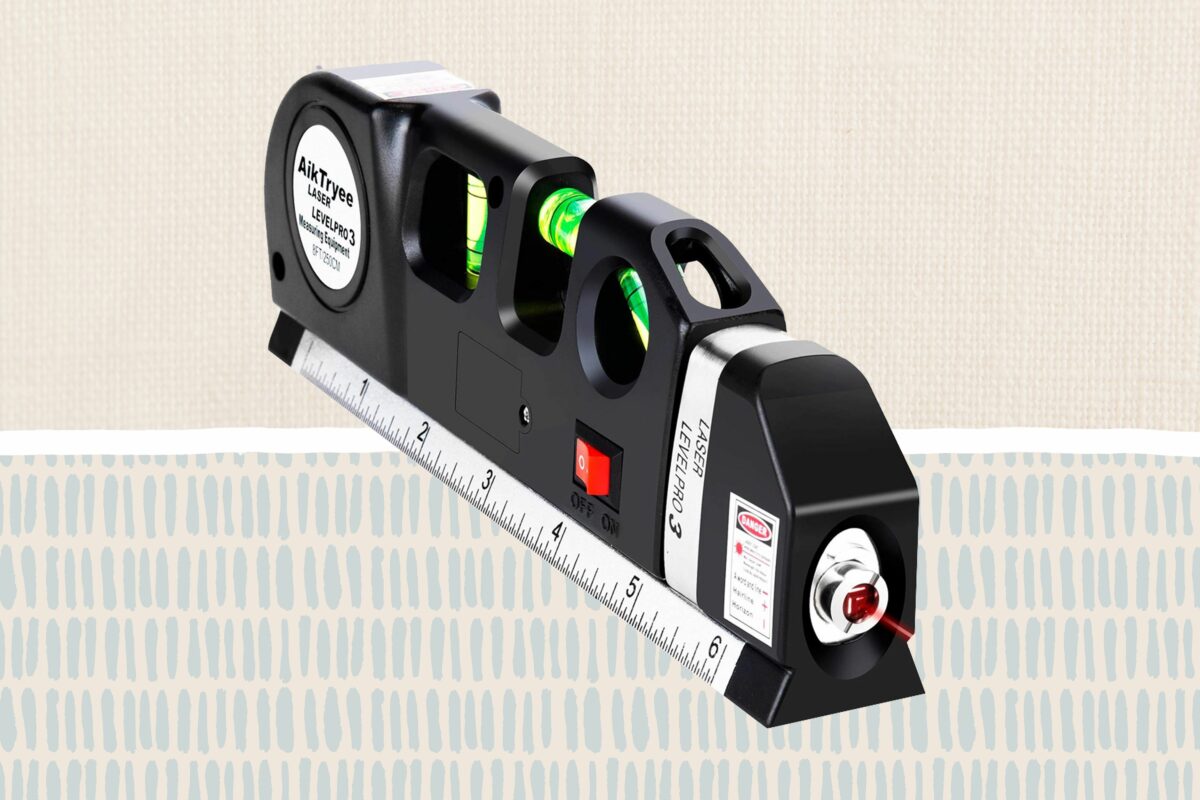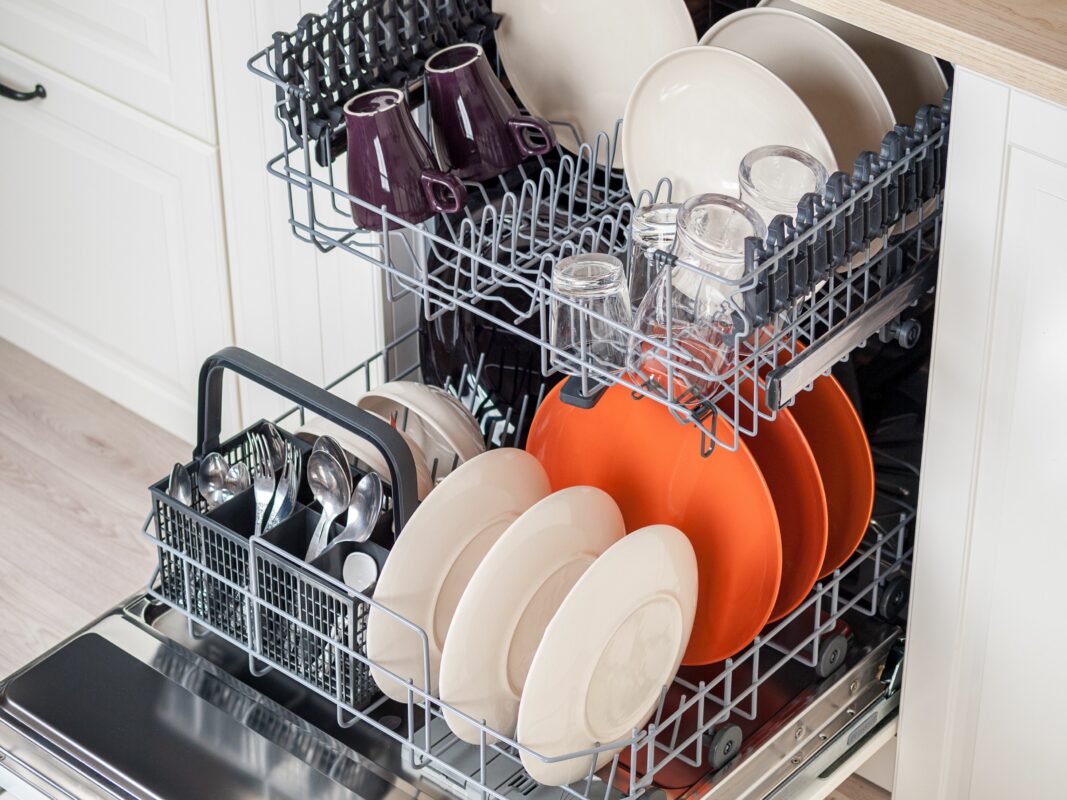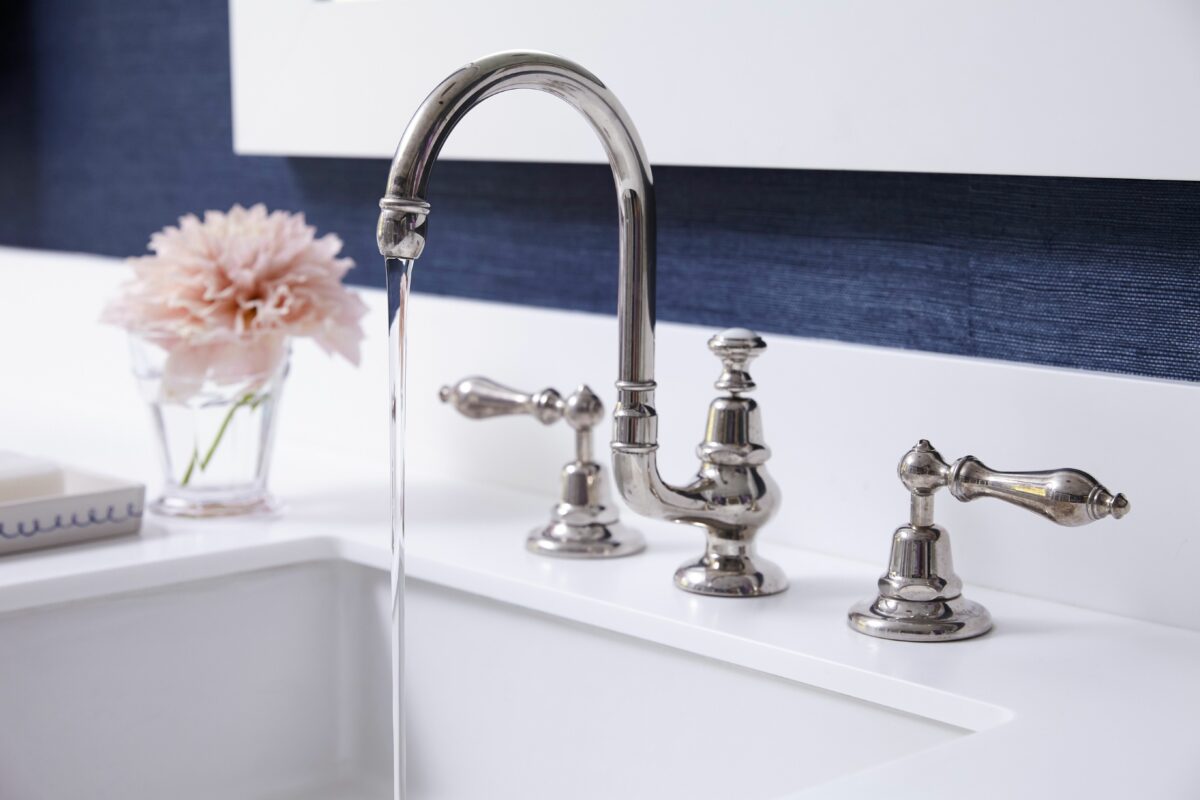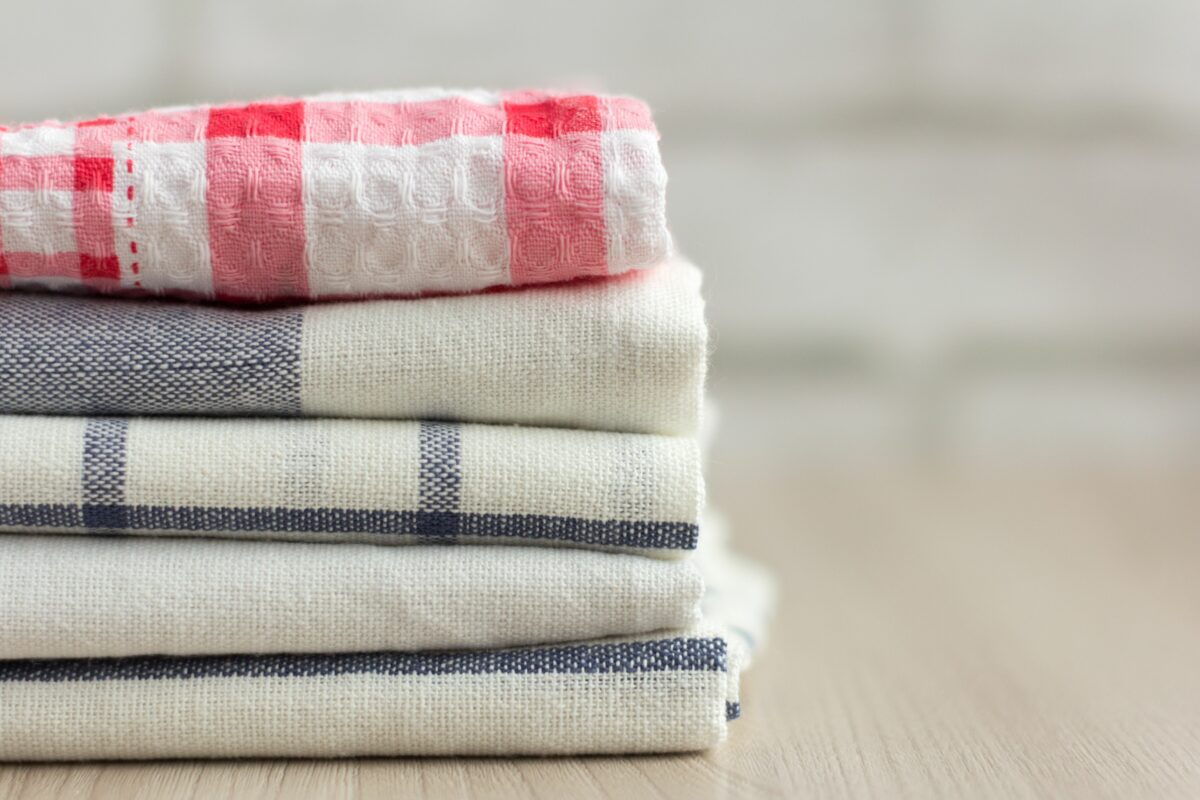The water pressure throughout your home should be high enough to quickly clean dishes at the kitchen sink. Water pressure may drop due to external issues, like a problem with the municipal water supply or a leak in the incoming water line from the well system. It can also result from issues with the home’s internal plumbing, causing problems with individual faucets and fixtures.
Low water pressure at the kitchen sink is a common occurrence that can be annoying when you want to cook, clean, or scrub the dishes. This problem is typically due to debris trapped in the aerator, cartridge, filter, or faucet, though some homeowners may be able to resolve the issue by fully opening one or more partially closed isolation valves. With this guide, you’ll learn how to test for low water pressure and the best ways to improve low water pressure in your kitchen sink.
Testing for Low Water Pressure
Testing the kitchen faucet’s flow rate is the fastest method for determining if you have a low water pressure issue. Generally, a kitchen faucet operates between 1.0 to 2.0 gallons per minute (GPM), with a maximum flow rate of 2.2 gallons per minute. To measure the flow rate at your kitchen faucet, turn the water to full pressure and let it run for about a minute. After a minute, place a five-gallon bucket under the faucet to catch the running water.
Start a timer as soon as you put the bucket in position and run the timer until the bucket is full. To find the flow rate of the kitchen faucet, divide the number of gallons by the time it took to fill the bucket. For example, if it took five minutes to fill the bucket, divide five by five to find that the faucet has a flow rate of 1.0 gallons per minute. If this measurement is lower than normal, keep reading to learn 10 ways to increase the low water pressure in your kitchen sink.
How to Improve Low Water Pressure in Your Kitchen Sink
1. Clear the Aerator
The aerator is one of the first things to check when there is an issue with the water pressure at your kitchen sink. The aerator is a fitting located on the spout of the faucet, which breaks up the water flow into many tiny streams to reduce faucet noise and produce a straight and even pressure stream. If debris becomes trapped in the aerator, it can reduce the water pressure.
To fix this problem, use pliers to gently grip and unscrew the aerator from the faucet’s spout. Rinse and remove any debris, and then reinstall the aerator. If the aerator is clogged with mineral deposits instead of loose debris, you may need to soak it in a bowl of vinegar overnight to dissolve the scale buildup before reinstalling it.
2. Clean and Flush the Faucet
Both new and old faucets can become clogged due to plumbing tape, plastic, mineral deposits, and other debris. If your kitchen faucet was recently changed or the water pressure suddenly dropped, you may need to clean and flush the faucet to restore the water pressure. This includes flushing the faucet’s housing to eliminate any debris that may be trapped inside.
- Start by turning off the water at the hot and cold isolation valves located under the sink.
- Turn the faucet on to drain any remaining water, disconnect the water supply lines, and unscrew the retaining nut.
- Lift the faucet out of the sink and inspect it for debris.
- Remove trapped debris with needle nose pliers, and place the faucet assembly in a bowl or bucket of vinegar overnight to dissolve any scale buildup.
- Flush the faucet with warm water at a nearby bathroom sink to rinse out any leftover debris.
- Reinstall the faucet, tighten the retaining nut, and reconnect the water supply lines.
- Open fully the hot and cold isolation valves located under the sink and turn on the faucet to test the water pressure.
3. Fully Open the Isolation Valves
If you look under the kitchen sink, you should see a hot and cold water line with a small angle stop isolation valve on each line. These valves make it easy to conduct repairs and replacements on the kitchen faucet without needing to shut off the water to the entire home. However, if the valves are not fully open, the flow of water to the kitchen sink is restricted, reducing water pressure.
This problem is easy to fix. Check under the sink to see if both the hot and cold isolation valves are fully open. If they aren’t completely in the on position, rotate them to fully open them and restore water pressure.
If one or both of the valves spin without affecting the flow of water, you need to hire a plumber to replace the faulty valves.
4. Unkink the Water Supply Lines
Similar to kinking a garden hose to restrict or fully stop the flow of water, the water supply lines under the sink can become kinked if they are shoved into a tight space without appropriate room or wound too tightly to allow the water to flow freely. When this happens, the flow of water to the kitchen faucet is reduced, and you might notice a drop in water pressure.
Resolve this issue by first checking which water supply line is kinked. If the kink happened recently, you can usually straighten it out and reposition the water line to prevent it from kinking again; if the water line has been kinked for a long time, you may need to completely replace it with a new water line to restore the flow of water. Make sure to choose a replacement that fits the space to avoid this issue in the future.
5. Flush the Pull-Out Hose Filter
Not all faucets are the same. Some have a pull-out hose that can be used to aim the faucet’s spout and control the direction of the water. These pull-out hoses may have a built-in filter that can become clogged with sediment, scale buildup, or other debris, leading to a drop in the water pressure at the kitchen sink. You can fix this problem by cleaning and flushing the filter.
- Pull out the hose enough to access the base of the handle, and use pliers to remove the handle from the hose.
- Locate and remove the cylindrical mesh filter at the base of the handle.
- Remove any visible debris, and flush the filter at a nearby bathroom sink. If substantial scale buildup remains, place the filter in a bowl of vinegar overnight to dissolve the buildup.
- Rinse the filter before reinstalling it in the base of the handle. Then, attach the handle to the hose, ensuring the connection is tight.
- Turn on the water to test the water pressure.
6. Flush the Water Supply Lines
The water supply lines are at risk of kinking and becoming clogged with sediment, scale buildup, and debris. First, identify which water supply line is causing the water pressure problem by turning on only the cold water and then switching to only the hot water. If both lines appear to be restricted, you can alternate between them to flush the lines.
- Start by turning off the hot water isolation valve located under the sink.
- Using pliers, disconnect the hot water supply line from the isolation valve. Then, hold the end of the supply line over a bucket to prevent water from spilling under the sink.
- Turn on the faucet and allow the water to run into the bucket for about 10 seconds to flush the line. If the faucet has only one handle, it should be set to a neutral position between hot and cold, but if it has two handles, both should be fully open.
- Turn off the faucet and reconnect the water supply line to the hot water isolation valve.
- Open the hot water isolation valve, then turn on the faucet to test the water pressure.
- If necessary, repeat this process with the cold water supply line.
7. Adjust the Pressure Regulator
Depending on your home plumbing system, a pressure regulator valve (PRV) may restrict the flow of water to the kitchen sink and other plumbing fixtures throughout the home. This type of valve controls the water pressure entering and flowing through the home to prevent damage to the plumbing due to high water pressure, but if it is set too low, you may notice a significant drop in water pressure.
Locate the pressure regulator valve near the main water shut-off valve for the home. It should have an adjustment screw on the top that can be turned clockwise to increase the water pressure throughout the home.
Adjust the pressure only as much as needed, keeping the flow rate below 2.2 GPM to avoid damaging the plumbing system.
If you don’t feel confident making this adjustment on your own, hire a plumbing expert to complete the adjustment and test the water pressure.
8. Locate and Repair Leaks, Corrosion, and Other Pipe Problems
Problems with the pipes throughout the home could lead to low water pressure at the kitchen sink. Leaks can affect the water pressure and cause water damage, mold growth, and rot. Similarly, severe corrosion could lead to a break in the water line, while substantial scale buildup can significantly restrict the flow of water throughout the home.
If you suspect a problem with the pipes, inspect the plumbing as best as possible. However, if you aren’t confident in your knowledge of plumbing systems, hire a plumber to inspect and repair any leaks. Additionally, a plumber can identify and replace severely corroded or restricted pipes to improve the water pressure.
9. Upgrade to Larger Water Lines
The size of the pipes supplying water to the faucet affects the water pressure at the kitchen sink. Even if the home has new plumbing lines that are completely unrestricted by debris or scale buildup, the water pressure may be lower than expected if the pipes are too small for the home.
The average home has 1/2-inch or 3/4-inch plumbing, while larger properties may have 1-inch or 2-inch lines. If the water pressure is too low, upgrading the water line may improve it. However, if the water lines are already big enough for the amount of water entering the home, the water pressure will not increase by upgrading the lines. Consult a plumber before starting this project to determine if this fix will work for your home.
10. Install an Under-Sink Pressure Booster
When the plumbing system is working properly, but you still aren’t getting enough water pressure to clean the dishes or fill a bucket, installing an under-sink pressure booster is another option. When you turn on the faucet at the kitchen sink, the water flows through the pressure booster, where a motor-operated impeller increases the water pressure before it exits the spout. Most homeowners will want to hire a plumber to ensure the pressure booster is installed and working properly.


